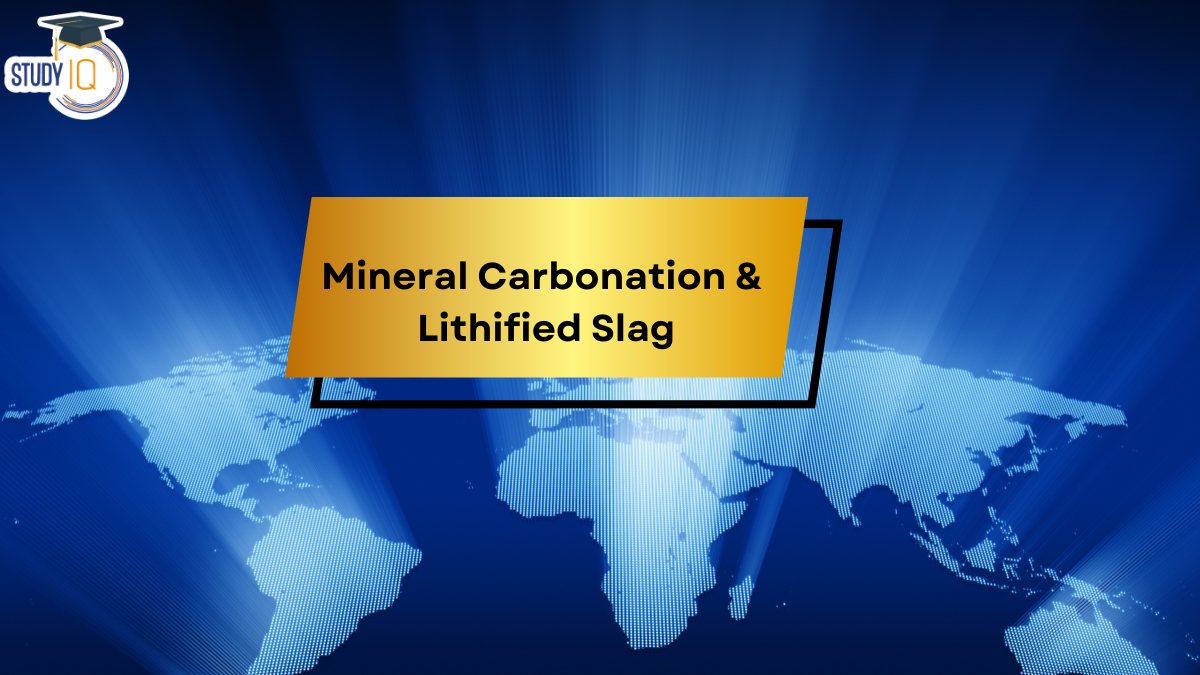Table of Contents
What is Slag?
- It is a composite material containing metal oxides (such as iron oxide, calcium oxide, and magnesium oxide) and silicon dioxide (SiO₂) and is a by-product of the steelmaking process in the iron and steel industries.
- It is created when molten metal is separated from the impurities in ore during smelting or refining.
- The molten slag floats on top of the heavier molten metal and is removed once the metal is extracted.

Usage:
- Construction Material: Slag is often used in road construction, concrete production, and as an aggregate for cement.
- Environmental Applications: Some slags are used to neutralise acidic soils or water bodies due to their ability to absorb and stabilise contaminants.
- Carbon Sequestration: Certain types of slag can capture and store carbon dioxide (CO₂) through a process called mineral carbonation.
- Slag is chemically stable and has the ability to neutralise acidity.
- When lithified slag breaks down, it stores greenhouse gases like carbon dioxide through a process called mineral carbonation.
- This process mimics natural weathering.
- Slag is chemically stable and has the ability to neutralise acidity.
What is Lithification?
- Lithification is the process by which sediments are compacted and cemented together to form sedimentary rock.
| Fact |
|
About Mineral Carbonation
- It refers to the process of chemically converting carbon dioxide (CO₂) into stable carbonate minerals by reacting it with naturally occurring minerals.
- This process mimics natural geological processes, where CO₂ reacts with calcium, magnesium, or iron silicate minerals to form solid carbonates like calcium carbonate (limestone) or magnesium carbonate.


 World Day for International Justice 2025...
World Day for International Justice 2025...
 Anusandhan National Research Foundation ...
Anusandhan National Research Foundation ...
 Places in News for UPSC 2025 for Prelims...
Places in News for UPSC 2025 for Prelims...





















